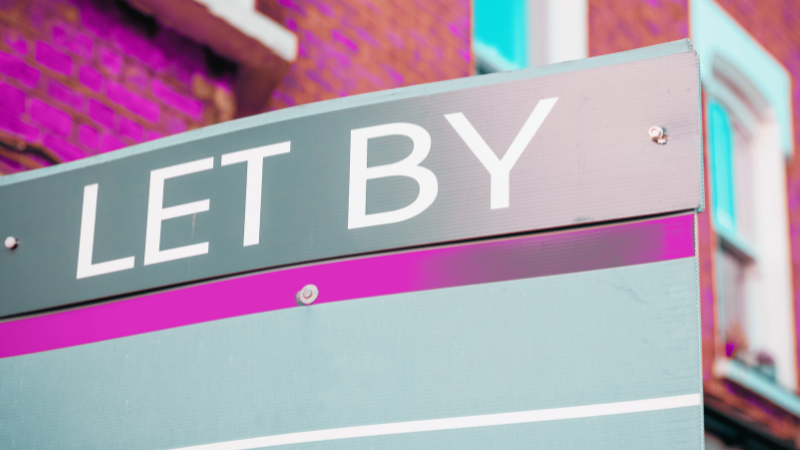MUFB Mortgages Explained: Your Essential Guide to Multi-Unit Property Financing


Property investors are showing more interest in MUFB mortgages lately. The numbers tell the story - landlords looking to invest in multi-unit freehold blocks jumped 14% in 2024 compared to 2023. This surge makes sense given these properties' advantages.
At the time you’re learning about an MUFB mortgage, you’ll find it’s a way to finance a building with multiple separate units under one freehold title. Savvy investors have noticed the attractive MUFB mortgage rates. The proof lies in the 37% increase in mortgage application values. On top of that, MUFBs deliver substantially higher yields than single-tenancy properties. These investments spread risk across multiple units, so empty periods in one unit don’t impact income from others.
The market has seen interesting regional shifts. Scotland’s mortgage agreements have doubled from 3.1% to 7.4%, while the North West experienced a 43% increase in mortgages agreed in principle. Mainstream lenders might create hurdles for MUFB financing. However, a good grasp of your options helps you tap into this potentially profitable investment chance.
What is a Multi-Unit Freehold Block (MUFB)?
A solid grasp of Multi-Unit Freehold Block is essential to make smart property investment and financing decisions. Let’s take a closer look at this property type.
Definition and key features
A Multi-Unit Freehold Block (MUFB) is a single freehold property split into several independent residential units. The owner has endless rights to both the land and buildings, unlike leasehold properties that limit ownership to a specific time period.
MUFBs stand out because all units fall under one freehold title. Each unit in an MUFB stands on its own with:
- A private entrance
- Its own kitchen and bathroom
- Individual Assured Shorthold Tenancy (AST) agreements
- Common areas like hallways, stairwells, or outdoor spaces
MUFB owners hold the complete freehold title, including all shared areas. This setup gives property investors a chance to expand their portfolios and boost their rental income.
How MUFBs differ from HMOs
The main difference between MUFBs and Houses in Multiple Occupation (HMOs) is how tenants use the space. HMO tenants rent single rooms and share kitchens and bathrooms. MUFB residents get their own complete living spaces.
MUFB financing also gives you more options than HMO mortgages. Each MUFB unit comes with:
- Full privacy for tenants
- Its own AST agreement
- No shared essential facilities between households
MUFB landlords don’t need special licenses that HMO operators must have. This makes property management simpler from a legal standpoint.
Both options let you earn multiple income streams from one property. This approach costs less than buying several separate properties.
Common types of MUFB properties
MUFBs come in many shapes and sizes:
- Purpose-built blocks of flats – Buildings designed from scratch as multiple-unit homes.
- Converted houses – Large properties, often Victorian townhouses, turned into separate self-contained flats.
- Multiple houses under one freehold – This could be a row of terraced houses or several properties sharing one freehold title.
- Mixed-use buildings – Properties combining commercial space downstairs with homes upstairs.
An MUFB might have just two units or hundreds, based on the property’s size. This flexibility attracts different investors, from newcomers to seasoned landlords looking to grow their portfolios.
MUFB properties also offer strategic choices. You can rent individual units for steady income or create leaseholds to sell units separately, possibly making more money as property values rise.
Why Investors Choose MUFBs
Multi-unit freehold blocks have caught the eye of property investors lately, and there are good reasons why. These properties make a lot of sense financially and practically, especially when you have the right MUFB mortgage. Let’s get into why smart investors are putting their money into these multi-unit properties.
Higher rental yields and income stability
Investors go after MUFB mortgages mainly because they can make more money. Regular buy-to-let properties usually yield around 5.2%, while MUFBs can bring in up to 7.0%. This big difference can really boost your profits as an investor.
What makes these returns so good? Multiple tenancies in one property boost your income potential significantly. The combined rent from several units usually adds up to more per square foot than you’d get from a single-family home.
MUFBs also give you a stable income. With multiple tenants paying rent at once, your cash keeps flowing even when someone moves out. If one unit sits empty, rent still comes in from other occupied units. Single-property investors don’t get this kind of security.
You can take your time finding good tenants instead of rushing to fill empty units because you’re worried about money. This works out great in city centers and near universities, where people always want to rent.
Portfolio diversification benefits
MUFBs help spread your risk naturally within one property investment. Rather than putting all your money on one unit with one tenant, you spread it across several rental streams. It’s just like having different stocks in your portfolio – it helps cut down your risk.
MUFBs offer these advantages:
- Your income stays steady when individual tenants leave
- You don’t depend too much on how any one unit performs
- Market changes affect different unit types differently, helping you stay stable
- You can try various strategies to get the best returns from each unit
This built-in risk spreading makes MUFB mortgages really attractive to investors who want strong property portfolios. Yes, it is worth noting that 14% more landlords wanted to invest in these properties in 2024 compared to 2023.
Lower acquisition cost per unit
MUFBs need more money upfront than single units, but each unit costs less overall. Buying flats together under one freehold usually works out cheaper per unit than getting them separately.
You save money on running costs too. Managing multiple units under one roof helps cut expenses. Maintenance, service costs, and paperwork get split across all units, which brings down the cost per unit.
To name just one example, fixing one roof that covers five units costs way less than fixing five separate roofs on different properties. One insurance policy beats dealing with many policies – it’s simpler and often cheaper too.
The numbers back this up – MUFB mortgage applications went up 37% in value, showing investors are going for bigger blocks while keeping their borrowing sensible.
Higher yields, steady income, spread-out risk, and lower costs explain why investors keep looking at MUFB mortgage options. Just remember that MUFB mortgage rates usually run 0.5-1% higher than normal buy-to-let rates, but the better returns typically make up for this extra cost.
Understanding MUFB Mortgages and Financing Options
Getting the right financing plays a vital role in multi-unit property investments. MUFB mortgages are financial products designed for properties with multiple, self-contained units under a single freehold title. Here’s what you need to know about your financing options.
Types of MUFB mortgage products
MUFB mortgage products make up a smaller market compared to single buy-to-let properties. This means fewer funding options exist, especially with mainstream lenders. Specialist lenders step in with flexible solutions for MUFB investors:
- Buy-to-let mortgages designed for multi-unit properties
- Day one remortgage options that let you refinance right after purchase
- Block mortgages that work with shared utilities
Properties with more than 10 units might need commercial buy-to-let lenders or commercial mortgage lenders. These specialists have more flexible rules for large, complex properties.
Fixed-rate vs variable-rate options
Your MUFB mortgage comes with different rate structures to think over:
Fixed-rate products keep your interest rate steady for 2-5 years. Your monthly payments stay the same whatever happens in the market, making budget planning easier.
Variable-rate mortgages shift interest rates as time goes by. These products follow reference rates – usually the Bank of England base rate. They might save you money if rates drop, but make planning harder because payments can change.
Tracker mortgages follow an external rate plus a small percentage. To cite an instance, a lender might charge 6.5% interest by adding 1% to a 5.5% base rate.
Bridging loans and refinancing
Bridging loans give MUFB investors quick, short-term financing. These loans are a great way to get properties fast, buy at auctions, or fund improvements before getting long-term financing.
Refinancing helps unite existing portfolio lending or raise money for more investments. This option works best, especially when you have plans to grow your MUFB portfolio or want better lending terms.
Interest-only vs capital repayment
Interest-only mortgages mean your monthly payments cover just the interest. You’ll pay less each month than with repayment mortgages, but need a separate way to clear the capital at term end.
Capital repayment mortgages include both interest and capital in monthly payments. The payments run higher, but your debt goes down steadily until it’s fully paid off by the end of the term.
How MUFB mortgage rates are determined
Several factors shape MUFB mortgage rates:
Lenders look at the valuation method – block valuation versus total valuation. Block valuations can run 15% lower than total valuations, which might reduce what you can borrow.
Your creditworthiness, property management experience, and location shape your offered rates. MUFB mortgages often cost more in interest than standard buy-to-let products because of their specialized nature.
Related reading:

Challenges and Legal Considerations
MUFB ownership comes with several challenges and benefits. Here’s what you need to think about before getting an MUFB mortgage.
Planning permissions and building regulations
Local council approval is essential before converting a property into an MUFB. Requirements differ based on location, so checking with authorities makes sense. Your units must meet legal standards with proper approvals for conversions.
Building regulation compliance plays a crucial role. Self-contained units not meeting 1991 building regulations (S257 Housing Act HMOs) need upgrades to meet standards. You’ll need proper certification. Independent building inspectors can verify your property’s compliance.
Your property must follow building codes even after you get an MUFB mortgage.
Tax implications and insurance costs
MUFB properties have a complex tax structure:
- Rental income beyond tax-free limits faces income tax based on your income bracket
- Additional residential properties usually attract higher Stamp Duty Land Tax (SDLT), though multiple units in one deal might qualify for relief
- Selling profits face Capital Gains Tax (CGT), with rates varying for basic and higher-rate taxpayers
- Your property’s value might trigger Inheritance Tax (IHT) if it exceeds certain limits
Insurance costs run higher for MUFB properties because insurers see them as riskier investments. Tax experts can help you find ways to save money based on your situation.
Licensing and compliance requirements
MUFBs don’t need specific licenses like HMOs. In spite of that, strict safety rules apply:
- Fire safety standards (smoke detectors, fire extinguishers, fire exits)
- Electrical safety regulations
- Gas safety checks
The government wants all rental properties to reach a minimum EPC rating of C by 2025. This means you might need to improve your property to meet these standards, which affects your investment math when looking for an MUFB mortgage.
Risks of limited resale market
MUFB mortgage options face unique challenges. Most mainstream lenders see MUFBs as complex investments, which limits financing choices.
The investor pool is smaller compared to standard residential properties, which could affect your exit plans. This small market might make quick sales difficult.
Managing multiple units brings extra complexity. You need to know about tenant relations, legal compliance, and building maintenance. The administrative work of managing multiple ASTs with separate amenities often needs full-time attention.
Mortgageable offers a free Equifax Credit Report as part of its service, with no obligation to proceed. Something worth considering.
Managing and Maintaining a MUFB Property
Managing multiple units can make or break your investment returns. Good management becomes a vital part of success after you get your MUFB mortgage.
Self-management vs property management companies
You’ll soon face a big decision – should you manage everything yourself or hire professionals? Self-management saves money since you won’t pay management fees that run between 8-12% of monthly rental income. However, this path takes up a lot of your time. You’ll handle tenant applications, collect rent, fix maintenance problems, and deal with tenant relationships in multiple units.
Property management companies bring expertise in following regulations, screening tenants, and coordinating repairs. Many MUFB owners find professional management worth the cost. These properties take more work to run than single buy-to-lets.
Tenant screening and communication
Your MUFB mortgage investment stays safer when you find reliable tenants through detailed background checks. Good screening should look at credit history, check references, and set clear expectations.
Clear communication with tenants helps create a smooth-running property where problems get solved quickly. MUFBs have separate units without shared living spaces, which naturally stops roommate conflicts.
Maintenance and communal area responsibilities
MUFB owners must take care of common areas like hallways, stairwells, and outdoor spaces. This means you’ll need to:
- Schedule repairs and regular inspections
- Handle utility splits between units
- Keep enough money saved for surprise expenses
- Get proper building insurance coverage
Fire safety and legal standards
New fire safety rules for apartment buildings took effect in England after the Grenfell Tower tragedy in October 2023. Your property must meet strict safety standards with proper detection systems, escape routes, and emergency lighting.
Every MUFB owner should run regular fire risk checks to spot dangers and needed safety upgrades. You must also follow building rules from local authorities and the Building Safety Regulator. They can make you fix any work that doesn’t meet standards.
The way you manage your property directly shapes your MUFB mortgage investment returns. Smart management from day one makes all the difference.
Conclusion
MUFBs give property investors a great chance to earn higher yields and build stronger portfolios. These investments make financial sense with rental yields up to 7.0% compared to 5.2% from standard buy-to-let properties. The rising popularity of MUFB mortgages shows their appeal, especially in Scotland and the North West’s current property market.
Managing multiple units and following building regulations can be challenging with MUFB investments. You’ll need to work with specialized mortgage products, too. Yet the rewards often outweigh these hurdles. Multiple rental streams protect you from empty periods, and your per-unit costs drop by a lot through economies of scale.
Smart investors should consider the financing options from specialist lenders who understand these complex investments better. Your skills and schedule will determine if self-management works for you or if professional property management fits better. Remember to include compliance requirements and maintenance costs in your financial plans.
Some property investors might find that MUFBs don’t match their strategy. All the same, these properties can lead to higher returns and steadier income than single-unit investments for those ready to handle the extra complexity. MUFBs are worth a closer look, whether you’re an experienced landlord expanding your portfolio or a strategic investor aiming for maximum rental yields.
Key Takeaways
MUFB mortgages offer property investors access to higher-yielding multi-unit properties that can generate up to 7.0% returns compared to 5.2% from standard buy-to-let investments, while providing built-in income diversification across multiple rental streams.
• Higher yields with reduced risk: MUFBs generate superior returns (up to 7.0% vs 5.2% standard buy-to-let) while spreading vacancy risk across multiple units, ensuring consistent income flow.
• Specialist financing required: Mainstream lenders rarely offer MUFB mortgages; investors need specialist lenders who understand multi-unit properties and typically pay 0.5-1% higher rates.
• Built-in portfolio diversification: Single MUFB property provides natural risk spreading across multiple tenants, reducing dependency on individual rental performance and void period impacts.
• Complex management demands: Success requires navigating planning permissions, fire safety regulations, tax implications, and either dedicated self-management or professional property management services.
• Strategic market positioning: Scotland and North West England show the strongest MUFB mortgage growth, with application values increasing 37% as investors target higher-value blocks for better economies of scale.
The combination of enhanced yields, income stability, and portfolio diversification makes MUFB mortgages attractive for experienced investors willing to handle increased complexity and regulatory requirements.
















